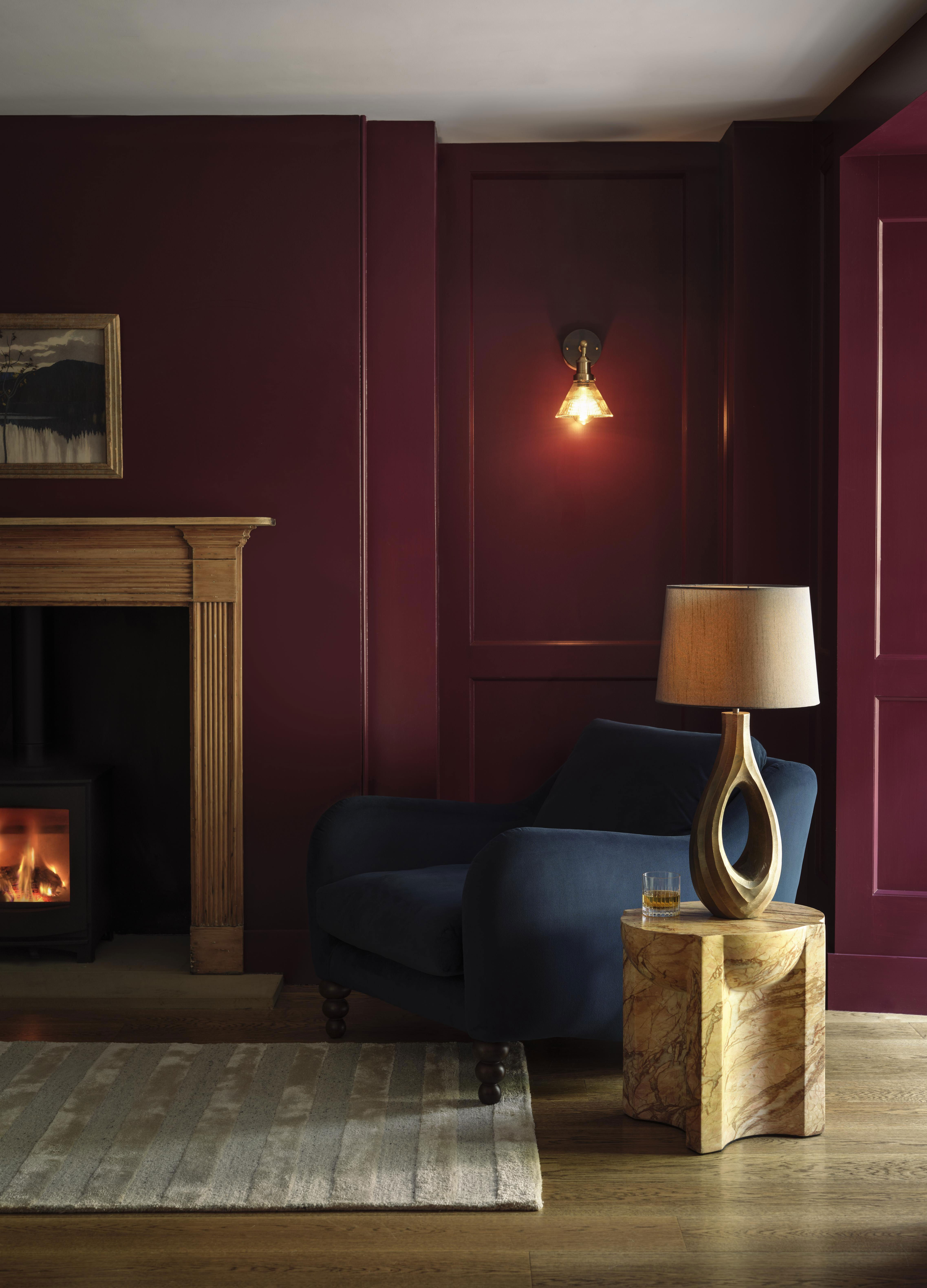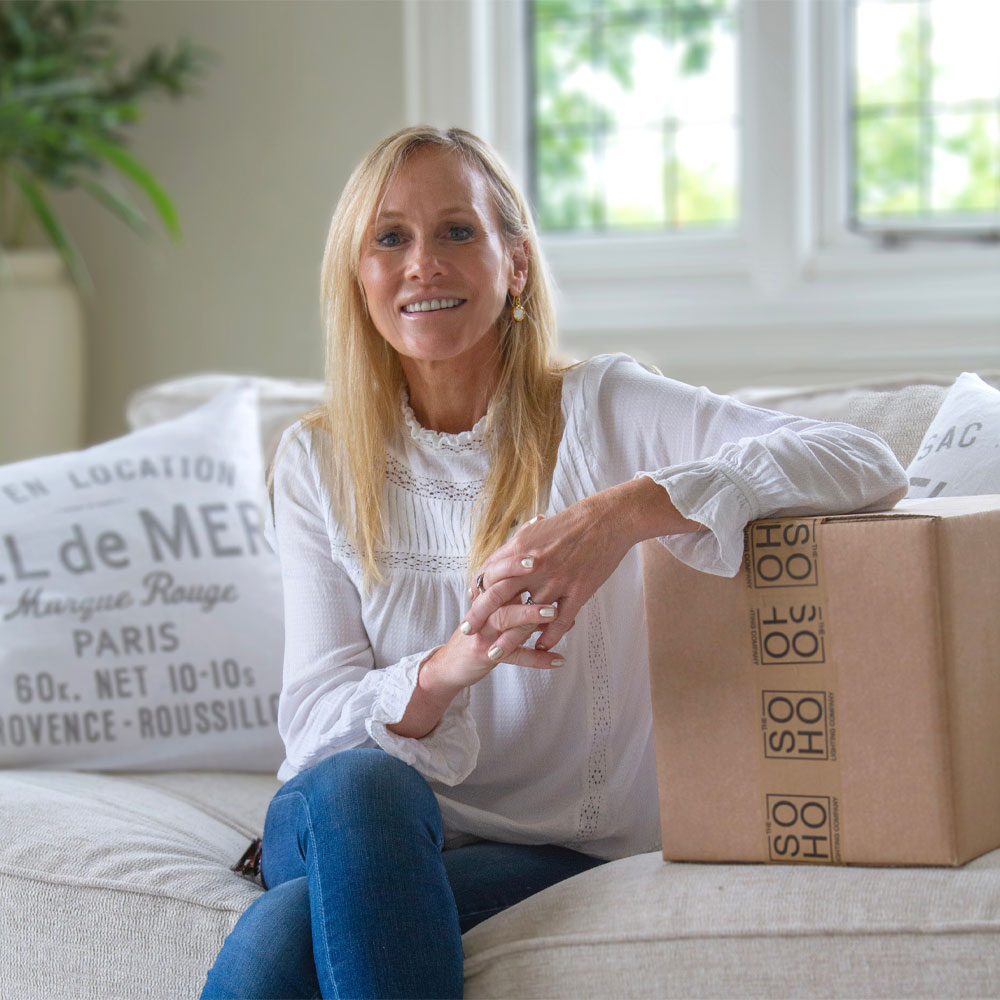Are you using the right colour temperature for lights in your home? If not, you should be
The right temperature can make or break an interior scheme, but do you know which to use and where? Our expert guide is here to help


Are you aware of the powerful effect the colour temperature of light can have on your interiors? It can completely change the mood of a room in an instant.
Light colour temperature plays a massive role in how your home looks and feels, from making a home cosy to making dark rooms lighter and brighter. Understanding a little more about the different kinds of colour temperatures and where and when they should be used is the easiest way to elevate any decorating scheme with minimal effort.
Good interior design is about more than following the latest lighting trends. We asked a range of lighting experts to explain the theory of colour temperature and how you can use it in your home to give it the ambience you desire.
What is light colour temperature and why is it important?
Before you head out to shop for new lights, it is important to understand what interior and lighting designers mean when they talk about colour temperature – it could just help you avoid making some of the more common lighting mistakes.
"Light temperature is measured in Kelvins," begins Marlena Kaminska, designer at ValueLights. "As you move across the scale from low to high, the Kelvins increase from 2000 to 6500K. As the Kelvins go up, the brightness goes up."
"There are three options for colour temperatures," explains Evelina Juzėnaitė, principal interior designer at Planner 5D. "Warm white (2700 - 3000K), neutral (3500 - 4100K), and cool white (5000-6500K). I know many people who choose only very warm lighting, others only cold, but some mix these colours in a room."



Marlena is a dynamic digital designer with a background in interior design. Taking a lead design role at home lighting brand ValueLights, Marlena merges her interior design expertise with her digital design prowess to bring innovation and style to the world of lighting.
Here, we take a look at each of the different light colour temperatures individually and explain how to use them to enhance your interior scheme.
Sign up to our free daily email for the latest royal and entertainment news, interesting opinion, expert advice on styling and beauty trends, and no-nonsense guides to the health and wellness questions you want answered.
Where to use warm lights

Let's begin with what is, arguably, the most popular light colour temperature – warm white. "Warm white is more suitable for rooms where you spend the most time in, as it’s believed that warm lighting brings people together, and makes rooms cosier and calmer," says Evelina Juzėnaitė.
This is evident when looking at the best colour combinations for a living room – they should always foster a sense of warmth and sociability.
"The warmer the light, the cosier we find it – a room bathed in soft lighting will feel more snug than if daylight (cool) lighting was used," says Marlena Kaminska.
“Just think about how inviting the light from a fire or log burner is – the colour of fire itself invites warmth," continues Marlena. "That’s why we associate orange light with warmth and protection – it is ingrained in our DNA, over generations and generations.”
"Living rooms and bedrooms are ideal for warm colour temperatures between 2700 and 3000K," advises Daniel Jarrett, CEO at Queensland Solar and Lighting. "These temperatures create a calm and pleasant atmosphere – perfect for relaxing after a demanding day, mimicking the soft, golden colours of sunset.
"Better sleep patterns and general well-being are promoted by the warm light helping the body and mind to relax," continues Daniel. "In living quarters, this light promotes dialogue and a comfortable environment for family get-togethers or quiet evenings."
"Warm light has a soft, yellowish glow that is cosy, inviting and intimate," agrees interior designer Angelique Kreller of Yabby. "This type of lighting is perfect for spaces where you relax, like living rooms, bedrooms or dining areas. I always recommend warm lighting for areas where you want to unwind at the end of the day, as it can genuinely help to produce melatonin and help you fall asleep."

Daniel Jarrett is chief executive officer at Queensland Solar and Lighting, a leading solar system provider in Brisbane and the Gold Coast. His background as an Energy Manager at ActewAGL has given him a deep understanding of energy tariffs and renewable energy plans.
Shop glass wall lights

RRP: £109 | The simple, industrial style of this wall light is designed to slide effortlessly into a range of interior schemes. The cut of the shade gives a good spread of illumination. Three other finishes are available too.

RRP: £27.99 | The amber-tinted glass of this black and brass wall light lends instant character to any room it is installed in. The simple globe design would suit modern and traditional schemes alike and, even better, the bulb is included.
 Plug-in fitting
Plug-in fitting
RRP: £35 | If you are after an easy-to-fit wall light then this stylish glass fitting is well worth considering. It is designed to simply plug into your mains socket and there are a range of matching lights to team it up with.
The best way to use neutral light

Although the term 'neutral colour light' might seem slightly ambiguous, this is a light temperature that works well in a range of spaces.
"For areas like the dining room or home office, neutral colour temperatures – between 3500 and 4000K – are best," explains Daniel Jarrett. "These temperatures provide flexibility for many activities by combining the coolness of daylight with the warmth of incandescent bulbs.
"Neutral lighting in a dining room can improve the appearance of food and preserve a comfortable environment," continues Daniel. "This lighting also helps home office interior ideas feel focused and productive without being overly harsh or energising. Neutral light's adaptability makes it ideal for open-plan homes too, where activities might change depending on the day."
"Neutral is more suitable for bathrooms, kitchens and home offices," states Evelina Juzėnaitė. "Neutral lighting is best chosen where colour is important to us – in the kitchen, the colour of food matters, and in the bathroom, it’s the colour of your skin, make-up and so on. There will be no distortion with this lighting, everything should look natural."
"Neutral light is for where you need a balance between relaxation and functionality," further explains Angelique Kreller. "It has a not-too-warm, not-too-cool glow without being harsh, making it ideal for kitchens and bathrooms. In bathrooms, it gives you all the light you need to pluck and preen without being overly clinical."

Evelina Juzėnaitė is the principal interior designer and head of the design council at the home design platform Planner 5D. She curates the Design School and weekly Design Battles. In addition to that, Evelina also works closely with the product to ensure it is up to date to fulfill the users’ needs.
Use cool light to energise a room

Despite many homeowners fearing that using cooler lighting will result in a space that feels cold and unwelcoming, this light temperature can benefit many rooms. Cool light is also sometimes referred to as 'daylight'.
"Daylight bulbs emit cooler tones and have higher colour temperatures – more than 4000K," says Marlena Kaminska. "This is a blue light, reminiscent of the sky on a clear, crisp morning."
"For areas needing high concentration, cool colour temperatures – between 5000 and 6500K– are great," says Daniel Jarrett. "This kind of lighting stimulates awareness and productivity by simulating natural daylight."
"Daylight bulbs are the perfect choice for task-based lighting, such as the ceiling lights in your kitchen or a table lamp on your study desk," says Marlena Kaminska. "We associated blue cool-toned lighting with alertness, openness and awareness – boosting your visibility and thus your ability to focus.”
“Colours with a cool undertone can be ideal in more functional spaces, like an office space," says interior designer, Anne Marie Cousins, founder of AMC Design. "Cooler colours also work well in practical rooms like kitchens where these hues can mimic natural light."

"As the kitchen is one of the rooms we use the most in the UK and can be the heart of the home, it is important to retain a welcoming vibe. To do this, make sure you add visual interest here and richer or brighter colours into your scheme such as an upholstered banquette or seating if possible, or a striking pattern on the kitchen blind.”
"Daylight bulbs can give even the most utilitarian of spaces a fresh, open feel and bring energy into the room," points out Bradley Montanez. Something to bear in mind if you are after small laundry room ideas to help visually expand the room.
For all its advantages, cool light is not always the best option.
"I generally avoid cool lighting in areas where you want to relax, as it can feel unwelcoming for these spaces," warns Angelique Kreller. "Cool light is energising and so best for workspaces, garages, or areas where clear, focused light is needed. It has a bluish hue that kind of mimics cloudy daylight, making it ideal for areas where you need full vision, like the laundry, bathroom or garage."

Ann Marie Cousins, founder of award-winning interior design house AMC Design. AMC Design is known and loved for its bold, vibrant palettes, seamlessly tying in with a property’s original features to make a stunning home. Ann Marie’s own Victorian house was the impetus for her career change from high-flying lawyer to award-winning interior designer.
Combining light colour temperatures
Don't feel you can only use one light colour temperature within a room, a combination can often work better and result in a more flexible space that can be used for a number of different activities. It could also help if you are looking into creating a stress-free home.
"Blending warm and neutral lights in the same space can be effective – such as using warm lighting for ambient light and neutral lighting for task-oriented areas," says Angelique Kreller.
That said, combining colour temperatures has to be done thoughtfully to work well. "Using bulbs with varying colour temperatures together in one room risks creating an inconsistent ambience and can cause subliminal stress," explains Marlena Kaminska.
“However, the exception to this rule is in multi-functional rooms, such as your living room. Here, lighting temperatures can be layered to be used at different points throughout the day," continues Marlena. “If you can, choose daylight-mimicking bulbs to lower stress and boost alertness during the day. In the evening, give your eyes a break by opting for calming, soft white warm-toned bulbs."

Angielique (Angie) Krelller is a Bachelor of Interior Design graduate with a strong interest in commercial and residential projects through practical design and implementation. As an interior designer, her approach centres around collaborative partnerships with clients, while ensuring their needs are seamlessly integrating functional requirements, and stylistic preferences. She possesses a strong knowledge of interior design principles, space planning, and materials selection.
Using smart lighting to adapt colour temperatures
Smart lighting has come such a long way in recent years and it can now be used to ensure your home is constantly benefitting from the right colour temperatures too.
"Improvements in LED technology and smart control systems allow one to have lighting that changes with the natural flow of sunlight throughout the day," explains Daniel Jarrett.
"Often called circadian or human-centric lighting, this kind of lighting can be set to change from cooler morning temperatures to warmer evening ones. The body's circadian cycles are helped to be regulated by this natural rhythm, enhancing mood, general well-being and sleep patterns.
"Adaptable lighting can help to create a more natural and comfortable environment in areas where people spend prolonged times, such as offices," continues Daniel. "Combining adaptive lighting with solar power systems marks the forefront of environmentally friendly, health-conscious home design."
"Colour temperature changing downlights are a smart choice for interior design as you can switch the settings and change your colour temperature with a flick of a switch," adds Lee Lovett. "From daylight mimicking lighting for tasks to a warm and inviting glow for a relaxing evening."

In 2017, after struggling to find the right lighting for her own renovation projects refurbishing historical buildings in Soho, co-founder Lee Lovett established The Soho Lighting Company, creating superior lighting solutions enabled by innovative technology. Designed in London and hand-finished in Cornwall by skilled artisans, the lighting brings together the best of British talent and a considered approach to creativity.

RRP: £14.44 | If you are just starting to kit your house out with home technology then smart light bulbs are a great first purchase. These bulbs allow you to create a mind-boggling range of lighting scenes suitable for any room of the house. They can be controlled with Alexa or Google Assistant or via an app on your smart device.
FAQs
What is the best colour temperature for bathroom lights?
One of the biggest bathroom design mistakes is getting your lighting wrong. While this is a room that needs to be highly functional, it is also one where we go to relax, restore and retreat.
"For bathrooms, where clarity is essential, I prefer cooler white light – around 3500K if there’s no natural light source. It’s crisp and clean, without being too harsh," says Carolyn Cerminara, founder and principal designer at Cerminara Design. "However, if there’s a lot of natural light, I’d stick within the 2700 to 3000K range to keep it cohesive. The key is finding the right balance – too much brightness can be overwhelming."
Which colour temperature is best for outdoor lighting?
All too often homeowners don't give enough thought to their outdoor lighting scheme – but colour temperature matters here too.
"A deliberate mix of colour temperatures can improve both utility and appearance in outdoor areas," explains Daniel Jarrett.
"Pathways, driveways and security lighting are among the places we need safety and visibility – that calls for cooler colour temperatures of between 4000 – 5000K. These values increase clarity and depth perception, so lower the risk of accidents.
"Warmer temperatures (2700 – 3000K) can create a more friendly and intimate environment which is ideal for evening events or peaceful introspection in outdoor leisure spaces, such as patios or decks," continues Daniel. "Combining several colour temperatures allows homeowners to design layered lighting that meets both atmospheric and practical demands."
If you are currently looking into making your house look expensive from the outside, do take time to think through the colour temperature of the lights you choose for the space.
Lighting plays a huge role in the way our homes feel to spend time in and can really help when it comes to designing an interior design scheme to avoid SAD.

Natasha Brinsmead is a freelance homes and interiors journalist with over 20 years experience in the field. As former Associate Editor of Homebuilding & Renovating magazine, Natasha has researched and written about everything from how to design a new kitchen from scratch to knocking down walls safely, from how to lay flooring to how to insulate an old house. She has carried out a number of renovation projects of her own on a DIY basis and is currently on the lookout for her next project.

